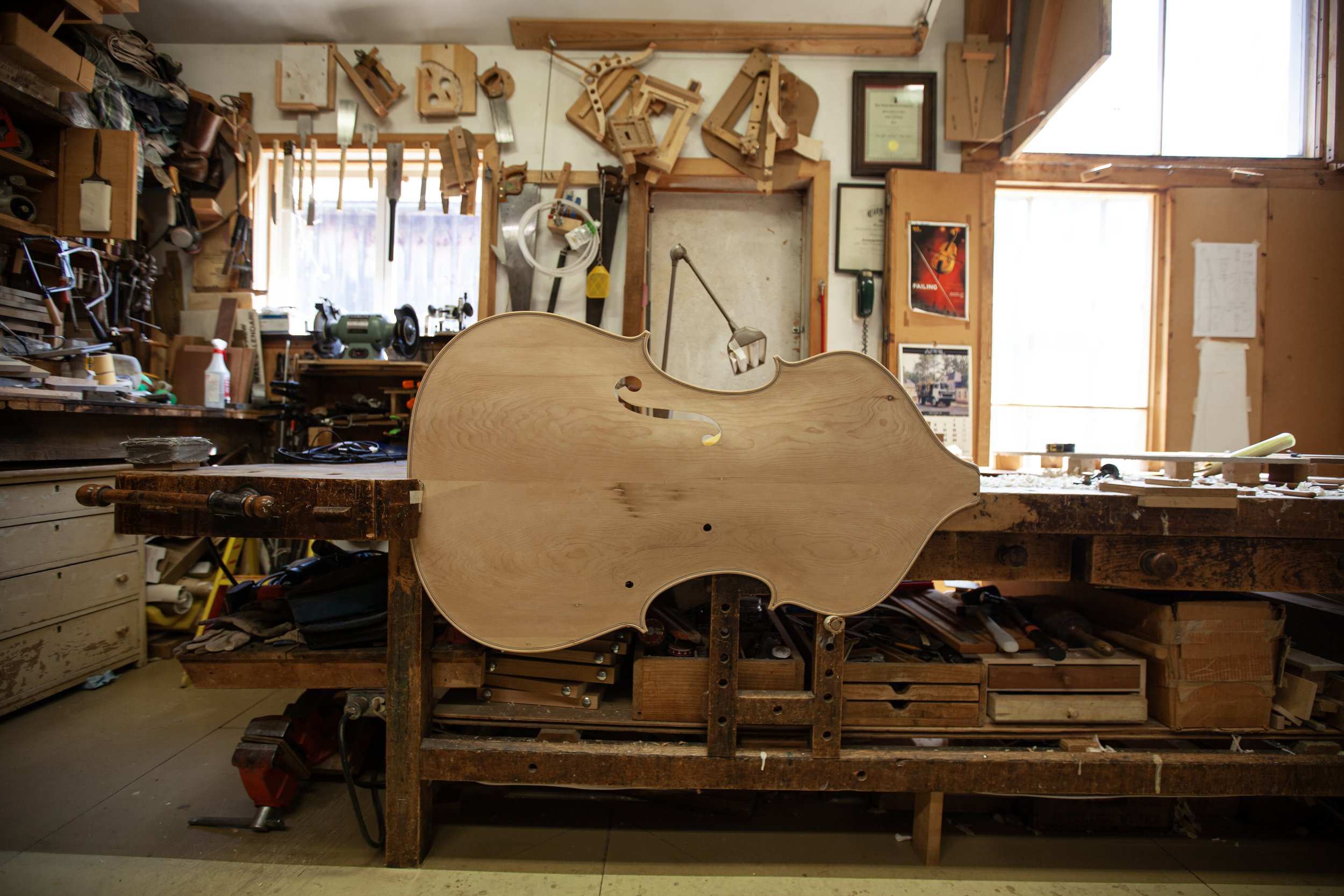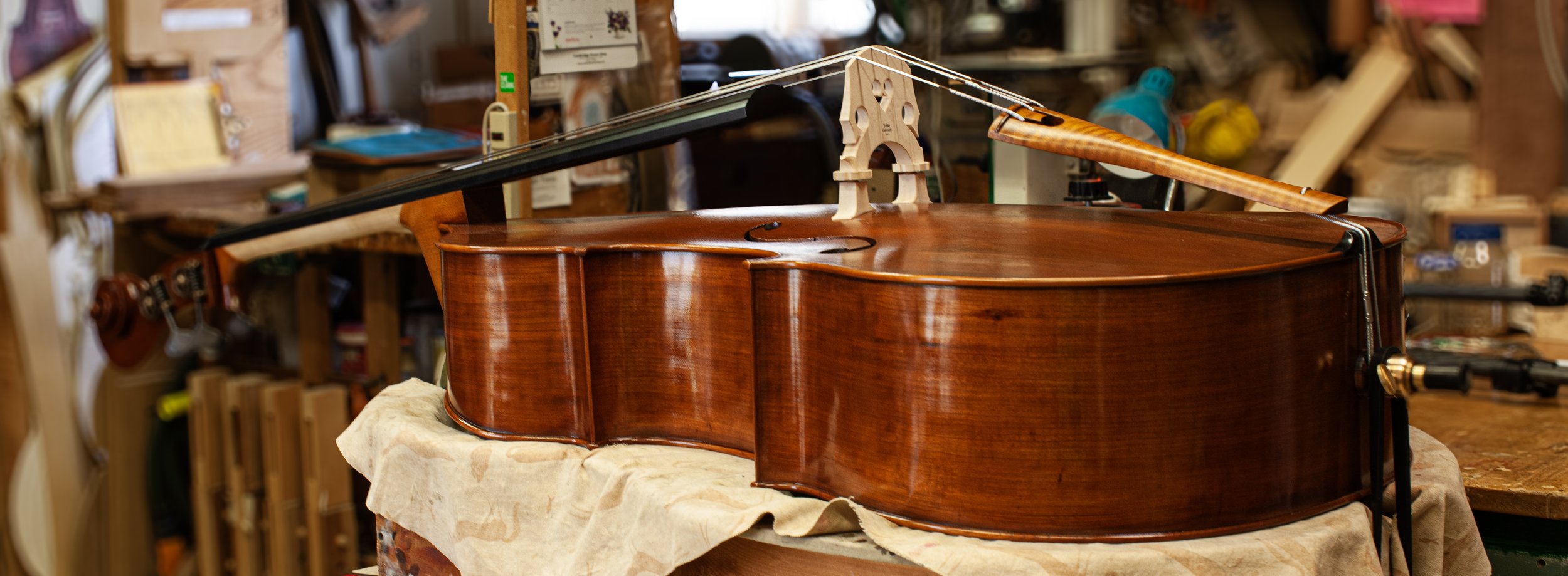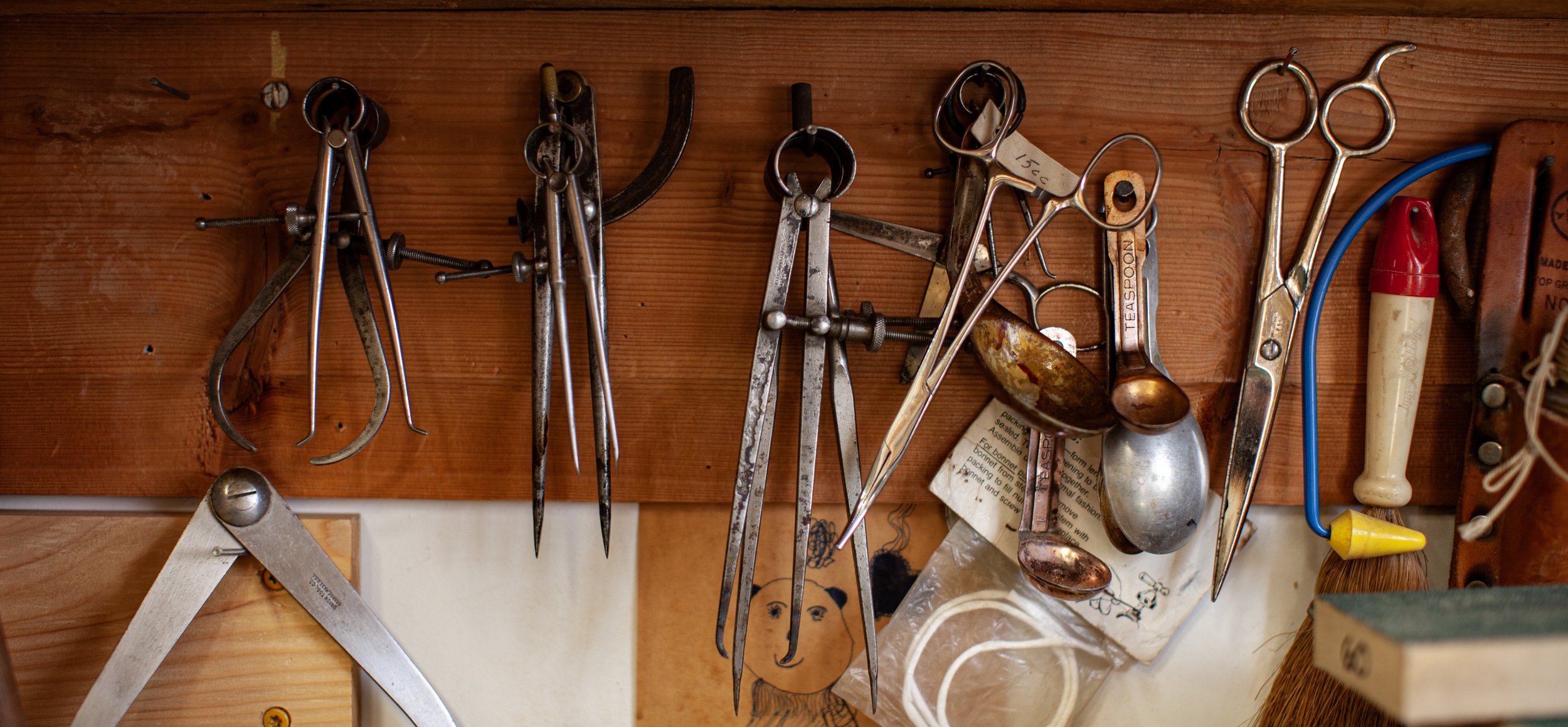
McIntosh Bass Luthiers
About
From his days as an architecture student, to years splitting firewood, to two decades of fine cabinetry, and now with over 30 years of lutherie experience, Robbie McIntosh’s knowledge of wood and its structural and aesthetic qualities informs everything in the shop.
McIntosh Bass Luthiers was founded in 1993. It is now a two-generation shop where Robbie and Helen McIntosh work side-by-side, specializing in high quality restorations and repairs using innovative and non-invasive techniques. They also build heirloom-quality handmade basses that will be played for generations to come.

Handmade Basses
McIntosh basses are finely crafted from carefully selected and seasoned woods—some reclaimed wood from old buildings, some locally sourced lumber that has been sawn and seasoned by Robbie. They are modeled after venerable basses that have passed through the shop and stood the test of time in the hands of generations of musicians. All of our basses are set up to be easy to play by people of all genders, statures and body types. McIntosh basses have won several medals for tone in VSA and ISB makers competitions.

Restorations
There may come a time when the bass cries out for an overhaul. Sometimes a bass has suffered so long from many “quick fixes,” wear, and even abuse or neglect that it calls for a complete rebuild. There’s nothing that can’t be fixed, and a restoration can be an opportunity to modernize the geometry and setup of the instrument. In our experience, great basses sound even better when they are made “whole” again after a restoration.

Repair & Setup
-
Fingerboard dressing
New replacement fingerboard in Ebony or Gaiatone.
-
New bridge
Re-fit or shim old bridge; re-cut string slots
Adjusters fit to bridge
Handmade maple “DiLeone” adjusters; aluminum; Full Circle, etc.
-
Re-set old post
New soundpost
Summer/Winter soundposts
“Neutral top” soundpost, using a dial indicator to determine the “neutral” position of the top. (This is a technique developed by Lou DiLeone.)
-
Neck reset for maximum ergonomic utility and playability
Neck graft to preserve the old scroll.
New neck and scroll, hand carved to replicate an old scroll, or factory made to save money when the old neck fails.
-
Custom fit C-extentions in Ebony (other woods), brass, and anodized aluminum. Custom designed hardware by Robbie and manufactured locally by Josh Ward.
-
Often the tuning machines are misaligned, which makes them difficult to tune and causes premature wear and malfunction. The remedy is usually to install bushings in the pegbox and drill new holes for the pegs. Sometimes the machines are so worn that they need to be replaced. In the case where the character of the original machines is important to the integrity of the bass, replicas can be fashioned using materials that match the originals exactly. When converting a three-string bass to a four-string, the fourth gear can be fabricated to match the original three. (See this post about another Yankee bass 3 to 4 string conversion, the J. B. Allen)
-
Ragged edges catching on things and getting worse? Let us repair the wood and smooth the edges to preserve your instrument.
Contact Us
We’ll talk through any questions you have about a potential repair, restoration, or new bass commission.

Testimonials
“The repair and restoration you’ve performed on my Busan is fantastic! Your technical skill is of the highest order but what makes your work truly exceptional is the patience and creativity you bring to the unique challenges of every project.”
— Jeremy McCoy, Assistant Principal Bass,
Metropolitan Opera, Domenico Busan, 1749
“Thanks so much for the fantastic restoration of the Gabrielli!
Your careful planning and highest level of workmanship gave the best result possible! Guiding me through your plans for the restoration, sending me pictures several times a week and discussing different approaches over the phone kept me 100% updated. So, even though I live in Sweden I felt like I was in on every step of the restoration!”
— Hans Adler, Principal Bass
The Gothenburg Symphony Orchestra, National Orchestra of Sweden